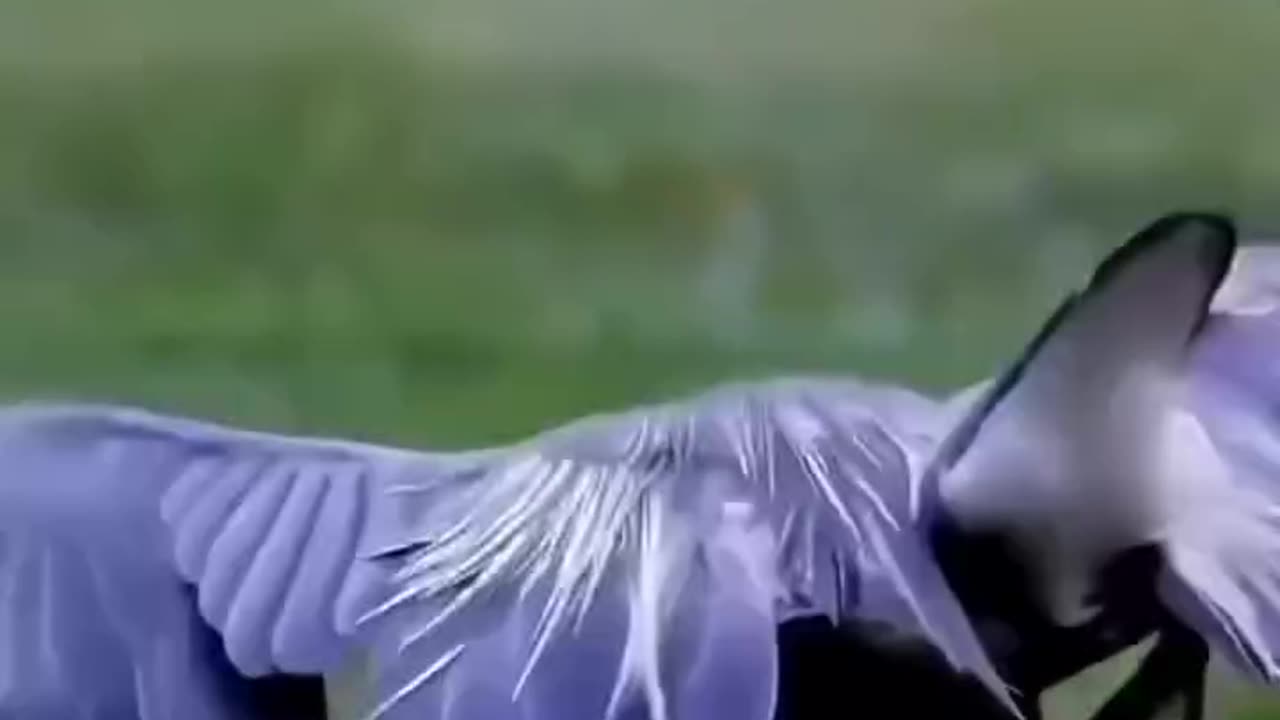Premium Only Content

Stork hunting
Migration Masters: Many stork species are known for their impressive long-distance migrations. Some travel thousands of kilometers between their breeding and wintering grounds, making them some of the longest migratory birds.
2. Nesting Behavior: Storks are known for their elaborate nesting behaviors. They often build large stick nests high up in trees or on man-made structures like chimneys or power poles. These nests can be reused and expanded over several breeding seasons.
3. Symbol of Fertility: In many cultures, storks are symbols of fertility and good luck. This symbolism is especially prominent in European folklore, where storks are said to deliver babies.
4. Diverse Diet: While storks are known for eating fish, they have a diverse diet that includes frogs, snakes, insects, and small mammals. Some species have adapted to urban environments and scavenge for food in garbage dumps or landfills.
5. Social Behavior: Storks are often social birds, congregating in large flocks, especially during migration or at communal roosting sites. They may also engage in cooperative hunting or nesting behaviors.
6. Conservation Concerns: Several species of storks are facing conservation threats due to habitat loss, pollution, and hunting. Efforts to protect their habitats and conserve wetland areas are crucial for their survival.
7. Long Lifespan: Storks are relatively long-lived birds, with some species capable of living for several decades in the wild.
These fascinating birds have captured the imagination of people around the world for centuries with their graceful flight, striking appearance, and intriguing behaviors.
-
 LIVE
LIVE
The Shannon Joy Show
1 hour ago🔥🔥The #MAHA PR Machine Must Be Destroyed For TRUE Medical Freedom To Prevail. Live Exclusive With PickAx CEO Jeff Dornik!🔥
165 watching -
 1:01:18
1:01:18
VINCE
3 hours agoJay Bhattacharya on Secret Bio-Labs, COVID Coverups, and MAHA | Episode 44 - 05/15/25
279K78 -

The Big Mig™
4 hours agoTrump Scores GINORMOUS in Qatar, Dems Cry Whine & Plot
4.65K7 -

Discover Crypto
2 hours ago $0.33 earnedEthereum's Path to $5,000: Analyzing 3 Key Reasons
3.26K -
 LIVE
LIVE
LFA TV
14 hours agoLFA TV LIVE STREAM - THURSDAY 5/15/25
9,688 watching -
 DVR
DVR
Bannons War Room
2 months agoWarRoom Live
17.2M4.62K -
 1:03:23
1:03:23
Dear America
4 hours agoWorld Peace or WWIII?! Russia and Ukraine Meet WORLD CHANGING Meeting!!
221K79 -
 2:47:22
2:47:22
Matt Kohrs
12 hours agoFed Chair Powell Speech, Inflation Report & Retail Sales || The MK Show
48.2K2 -
 1:37:50
1:37:50
Chicks On The Right
6 hours agoRFK's hearing is LIT, Trump gets a camel welcome, and Shri has no idea who he represents
62.4K9 -
 DVR
DVR
Badlands Media
8 hours agoBadlands Daily: May 15, 2025
34.7K11